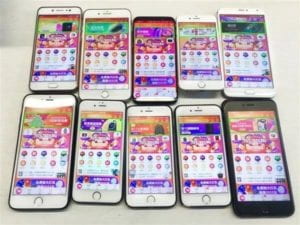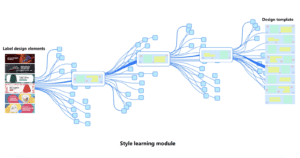【Link to presentation slides:https://docs.google.com/presentation/d/1HGNBJahn-no-A4c0an4ArfwE15fDsi-m95B06KopOjU/edit?usp=sharing】
Research:
The case I studied is the AI designer “Lubanner” from Alibaba. According to the annual report released by Alibaba, every year on November the eleventh (also known as the “double eleven festival”), about 40 million different posters and banners are called for for various promotion activities on Taobao. Such large amount of workload used to be extremely expensive and time-consuming for the company. However, since 2017, with the help of AI tech and machine learning, the artificial intelligence designer “Lubanner” created by Alibaba has improved the situation to a large extent.

“Lubanner” is a self-improving artificial intelligence program designed to create a large number of advertising banners and commercial posters in a short time. With the help of big data and the AI tech, the programmers write functions to train “Lubanner” to receive inputs, process the similarities and patterns between different inputs, and give outputs that meet the requirement by imitating these patterns. There are basically four things the programmers are doing. First, the digitalization of designing. They teach “Lubanner” to use image processing algorithm to identify and cutout the five major parts of each picture: the product, slogan, background, logo and decorations. Secondly, “Lubanner” archive those data. After that, programmers wrote function to teach “Lubanner” imitate those input posters and banners and create its own work. Finally, it evaluates its output before giving out the final design result. Here is a demo video presenting how “Lubanner” work in action.
The efficiency, low cost, and diversified outputs of “Lubanner” are all outstanding. According to Alibaba, it used to take a junior designer 20 minutes to work out a product banner. However, today, “Lubanner” is able to design up to 8000 different banners with various themes in 1 second. What’s more, the aesthetic of its works is also getting better and better, meaning that its works are getting more and more appealing to customers, sometimes even more so than works created by real humans. The reason why the machine is able to tell aesthetic is that it keeps updating itself by receiving and memorizing the most appreciated data about certain work and working out the key factors. It is clear that most commonly-used apps all have similar UIs, so are many banners and posters. AI designers can abstract and learn from these patterns by imitating them to create more appealing works for customers on their own. Thus, in the future, it’s only naturual that AI designer is going to take over more and more junior design work.

Even though it is clear that AI designers like “Lubanners” aren’t really producing any innovative art works,it’s actually more like a design factory that is able to produce diversified products. Still, these kinds of seemingly soulless yet effective design products have brought huge convenience to business company and are also becoming more and more well-received by the audience. The potential of the AI designer is numerous, and ot will most certainly one day revolutionize the way we define the word “design”.
source :https://www.alibabagroup.com/cn/ir/home; https://medium.com/@alitech_2017